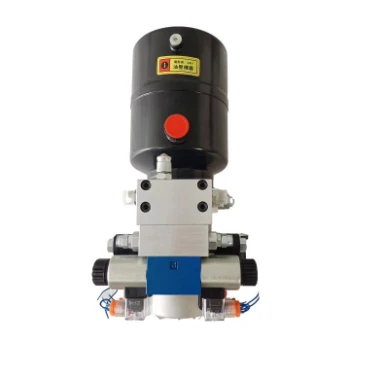Nov . 05, 2024 20:59 Back to list
hydraulic cylinder bushings manufacturer
Understanding Hydraulic Cylinder Bushings A Comprehensive Guide to Their Function and Importance
Hydraulic cylinders are essential components in various industrial applications, serving as the backbone of machinery that requires linear motion. Within these hydraulic systems, bushings play a crucial role, acting as bearings that reduce friction between moving parts. This article delves into the significance of hydraulic cylinder bushings, their manufacturing processes, and the importance of selecting a reliable manufacturer.
What are Hydraulic Cylinder Bushings?
Hydraulic cylinder bushings are cylindrical components that fit within the hydraulic cylinder's bore. They interface between the cylinder and the piston rod, providing a smooth surface for the rod to move through. This interface is vital for minimizing wear and tear, enhancing the cylinder's lifespan, and maintaining efficiency.
Bushings are typically made from materials such as bronze, steel, or polymer composites, each offering different advantages in terms of strength, durability, and friction characteristics. The choice of material is heavily influenced by the specific application and operating environment of the hydraulic cylinder.
Importance of Hydraulic Cylinder Bushings
1. Friction Reduction One of the primary functions of bushings is to reduce friction. By providing a smooth surface for the piston rod to glide through, they allow for efficient operation of the hydraulic system, minimizing energy loss and improving overall performance.
2. Wear Resistance Hydraulic systems operate under significant stress and strain, and components are subject to wear over time. High-quality bushings are engineered to withstand these conditions, ensuring that they do not degrade quickly, which can lead to costly repairs and downtime.
3. Alignment Maintenance Bushings help maintain proper alignment of the piston rod within the cylinder. Misalignment can lead to uneven wear and additional strain on the hydraulic components, potentially resulting in failure.
4. Contaminant Prevention Well-designed bushings can also help keep contaminants out of the hydraulic system, preventing damage and ensuring smooth operation. This is particularly crucial in environments where dust and debris are prevalent.
The Manufacturing Process of Hydraulic Cylinder Bushings
The manufacturing of hydraulic cylinder bushings involves several steps, including design, material selection, machining, and quality control. Here’s a closer look at the process
hydraulic cylinder bushings manufacturer

- Design and Engineering The first step in manufacturing bushings is designing them based on the specifications of the hydraulic system. This involves CAD software to create precise designs that consider factors like load, speed, and environmental conditions.
- Material Selection Choosing the right material is critical. Manufacturers must select materials that balance wear resistance, lubrication characteristics, and cost-effectiveness. Common choices include machined brass for its self-lubricating properties, and specialized polymers that offer low friction.
- Machining Once the materials are selected, the manufacturing process moves to machining, where the raw materials are cut and shaped to meet the design specifications. This process often involves CNC (Computer Numerical Control) technology for precision.
- Quality Control Final inspection and testing are essential to ensure the bushings meet the necessary standards. This can include dimensional checks, hardness testing, and load testing to verify performance under operational conditions.
Choosing a Reliable Hydraulic Cylinder Bushing Manufacturer
When selecting a manufacturer for hydraulic cylinder bushings, consider the following factors
1. Experience and Reputation Look for manufacturers with a proven track record in the industry. Established companies are more likely to produce high-quality products.
2. Customization Capabilities Every hydraulic system has unique requirements. A good manufacturer should offer custom solutions tailored to specific applications.
3. Quality Assurance Ensure that the manufacturer adheres to rigorous quality control standards and certifications, providing products that meet or exceed industry specifications.
4. Customer Support A reliable manufacturer should offer excellent customer service, providing support throughout the purchasing process and after-sales assistance.
In conclusion, hydraulic cylinder bushings are critical for the efficient operation and longevity of hydraulic systems. By understanding their function, the manufacturing process, and the importance of selecting a reputable manufacturer, businesses can ensure optimal performance of their hydraulic machinery, leading to increased productivity and reduced operational costs. Whether you are involved in construction, manufacturing, or any other industry that relies on hydraulic systems, investing in quality bushings will pay dividends in the long run.
-
Fork Lift Power Units - Hebei Shenghan | Efficiency, Reliability
NewsJul.13,2025
-
1.5-Ton Turbocharged Cylinder-Hebei Shenghan|Hydraulic Solution,Energy Efficiency
NewsJul.13,2025
-
Auto Hoist Power Units-Hebei Shenghan|Efficiency&Industrial Lifting
NewsJul.13,2025
-
Double Acting Power Units-Hebei Shenghan|Hydraulic Solutions,Industrial Efficiency
NewsJul.13,2025
-
1.5 Ton Lifting Cylinder 70/82-40-290-535 - High-Performance Hydraulic Solution | Hebei Shenghan
NewsJul.13,2025
-
Fork Lift Power Units - Hebei Shenghan | Efficiency&Reliability
NewsJul.13,2025
